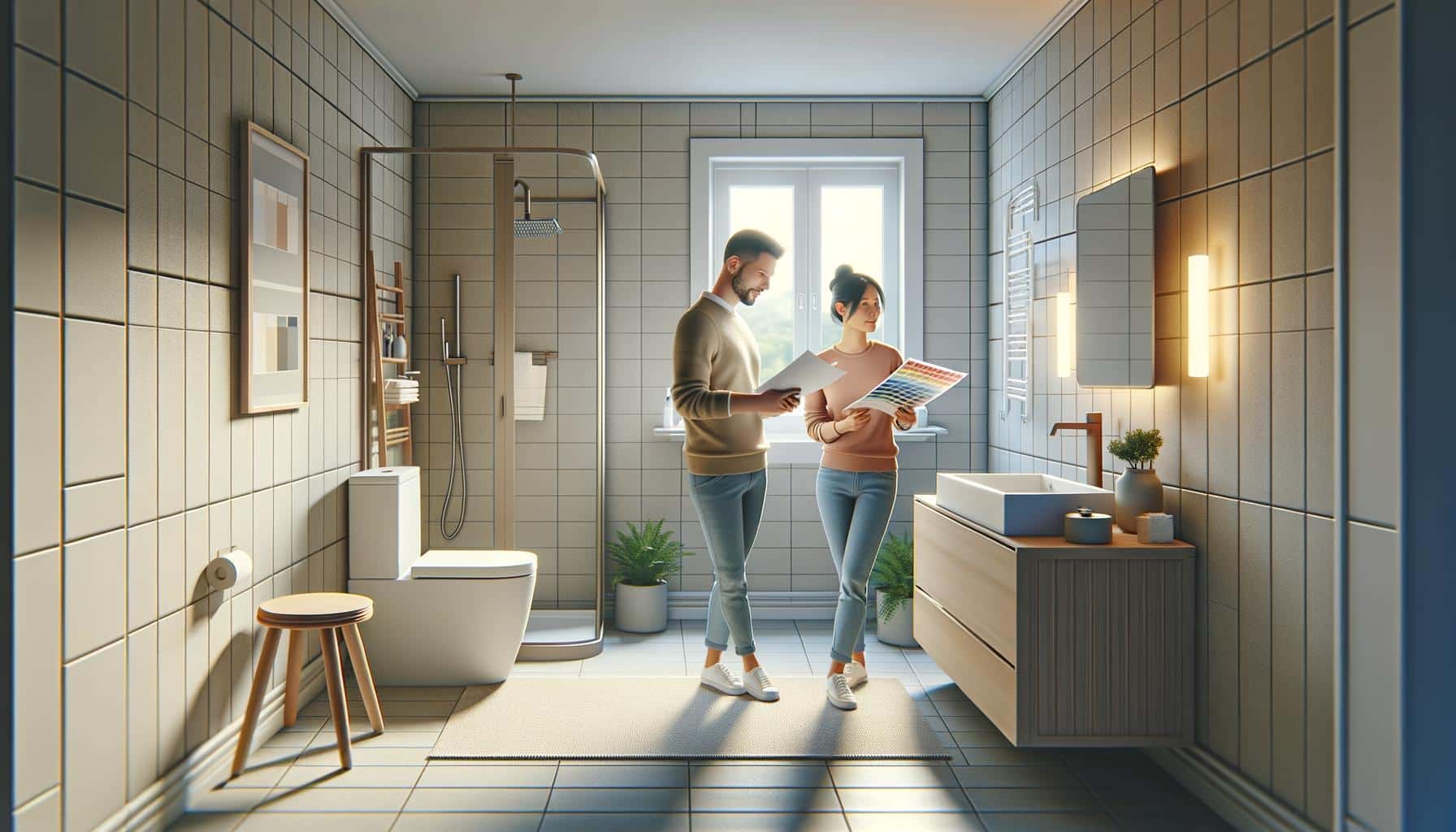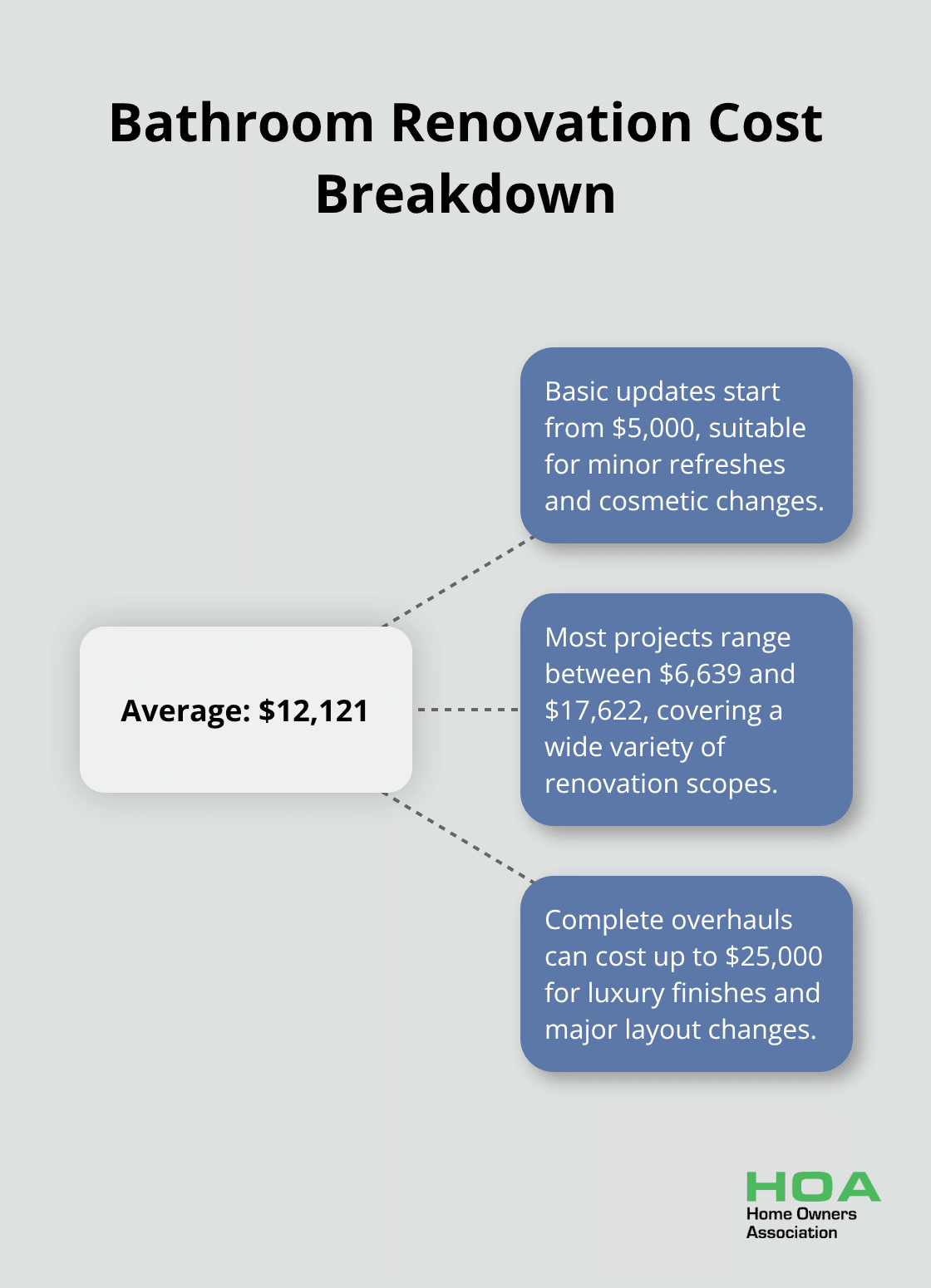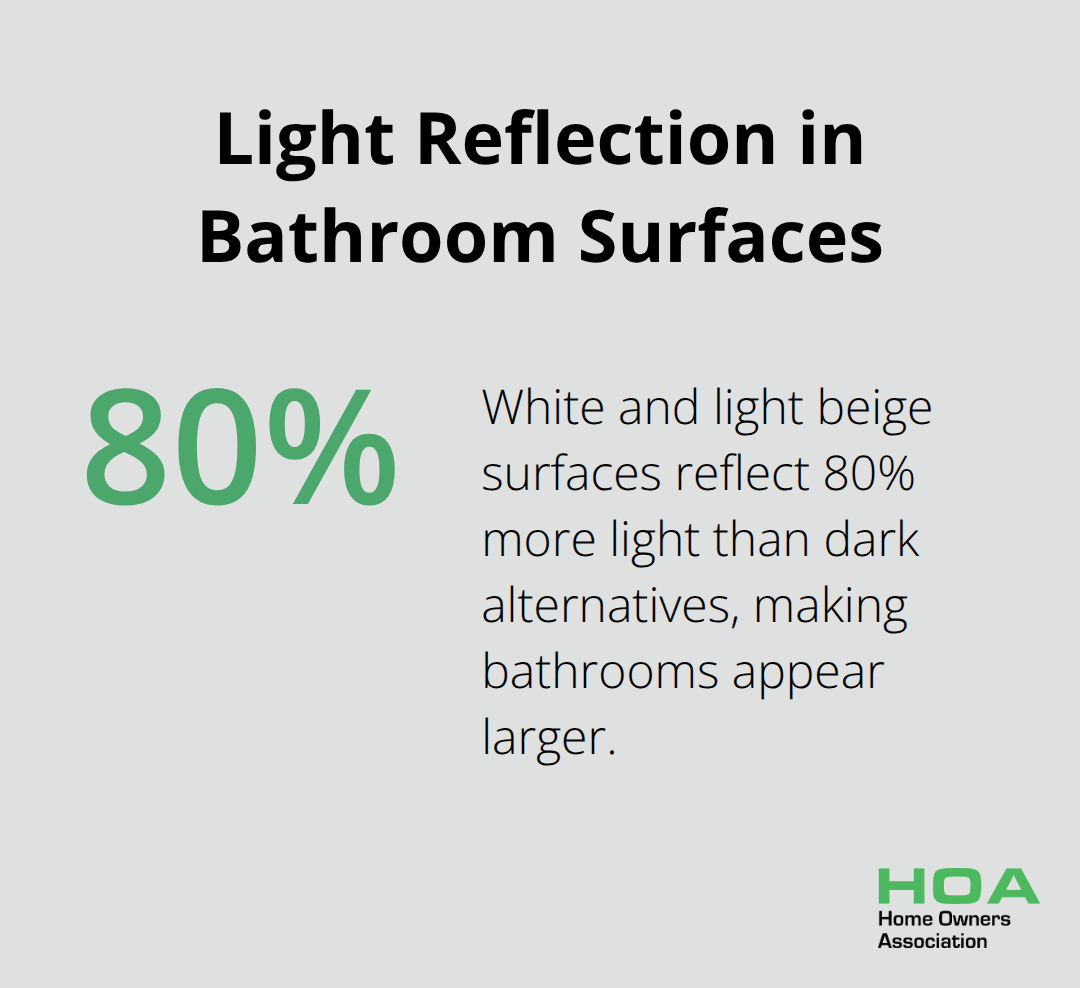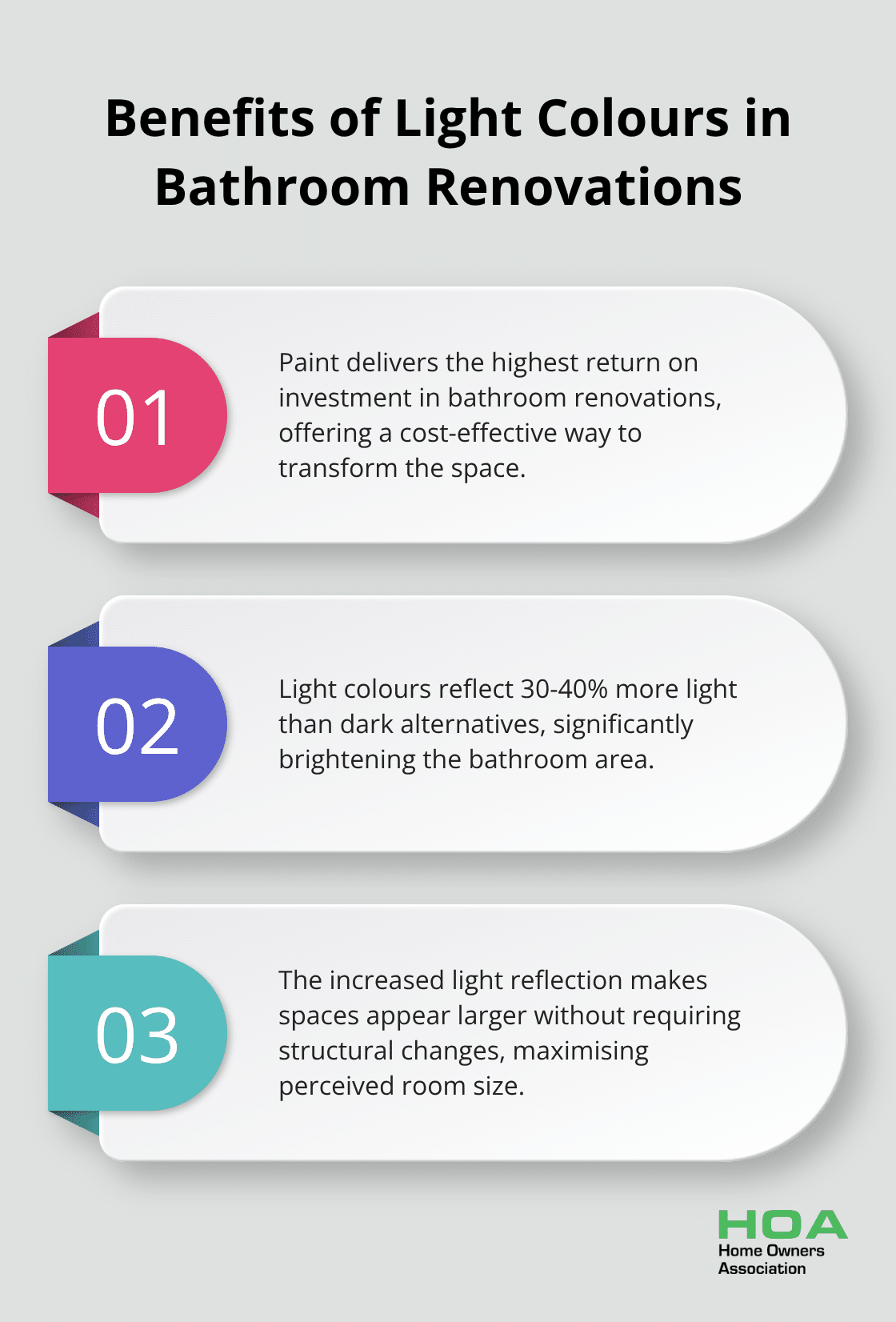
Small bathrooms present unique challenges, but smart planning transforms cramped spaces into functional retreats. The right bathroom renovation ideas for small bathrooms can increase your home’s value by 10-20% according to recent real estate data.
We at Home Owners Association see homeowners struggle with layout constraints and budget limitations daily. This guide provides proven strategies to maximise every square inch while keeping costs manageable.
Planning Your Small Bathroom Renovation
Assess Your Current Layout and Plumbing
Start your renovation by documenting your existing plumbing and electrical locations. Measure pipe distances from walls and note where water lines connect to fixtures. Moving plumbing can significantly impact your renovation budget, so work within your current layout when possible.
Take photos of everything before demolition begins. Check if your home was built before 1978, as lead paint regulations require certified contractors for removal (adding $8-$15 per square foot to your budget).
Set a Realistic Budget and Timeline
Small bathroom renovations range from $5,000 for basic updates to $25,000 for complete overhauls. The average bathroom remodel costs about $12,121, with most projects ranging from $6,639 to $17,622. Allocate 20% of your budget for unexpected issues like water damage or code updates.

Professional installation costs represent 35-50% of total expenses, while materials account for the remainder. Trade pricing through membership programs can reduce material costs by 15-30%. Plan for 2-4 weeks completion time, with plumbing and electrical work requiring the longest duration.
Identify Your Must-Have Features and Priorities
Focus spending on fixtures that get daily use. Quality tapware and showerheads provide better performance and longevity than budget alternatives. Waterproof flooring prevents costly water damage repairs later.
Skip expensive tile patterns that increase installation time and labour costs. Wall-mounted toilets save 6-9 inches of floor space but require reinforced framing during construction. Choose white or light-coloured fixtures for timeless appeal and easier resale value.
With your planning foundation solid, you can now explore specific design strategies that maximise every square inch of your compact space.
Space-Maximising Design Ideas for Small Bathrooms
Install Wall-Mounted Fixtures and Floating Vanities
Wall-mounted toilets free up 6-9 inches of floor space compared to traditional models, which makes your bathroom feel noticeably larger. These fixtures require reinforced wall framing, so plan this during your structural phase. Floating vanities bring a crisp, modern edge to bathrooms and make rooms feel larger by elevating storage off the floor. Choose vanities between 400-600mm wide for tight spaces. Wall-mounted tapware eliminate countertop clutter and allow for larger basins in the same footprint.
Corner-mounted sinks maximise awkward spaces that standard fixtures cannot utilise. Install wall-hung towel rails and soap dispensers to keep surfaces clear. The National Association of Realtors reports that streamlined fixtures increase perceived bathroom size by up to 30%.
Use Light Colours and Mirrors to Create Illusion of Space
White and light beige surfaces reflect 80% more light than dark alternatives, which makes spaces appear larger. Large-format tiles in 600x600mm or larger minimise grout lines that create visual clutter. Use the same tile on floors and walls to eliminate visual breaks. Install mirrors opposite windows to double natural light reflection.

Position one large mirror above the vanity rather than multiple small ones. Large mirrors create depth perception in compact spaces. Gloss finishes on vanities and tiles bounce additional light around the room. Avoid dark grout colours that create grid patterns and fragment wall surfaces.
Choose Multi-Functional Storage Solutions
Recessed medicine cabinets save 100-150mm of space while they provide essential storage. Install floating shelves in corners and above toilets for vertical storage without floor impact. Choose vanities with drawers rather than doors for 40% better access to stored items (drawers provide superior organisation compared to cabinet doors). Built-in shower niches eliminate plastic caddies that create visual noise.
Over-toilet storage cabinets utilise dead space effectively. Wall-mounted towel ladders provide multiple points in minimal floor area. Consider vanities with integrated laundry hampers for dual functionality in powder rooms.
These space-maximisation strategies work best when paired with cost-effective renovation approaches that deliver maximum impact for your investment.
Cost-Effective Renovation Tips and Materials
Transform Spaces with Strategic Paint and Hardware Updates
Paint delivers the highest return on investment in bathroom renovations. Premium bathroom paint costs $45-65 per gallon but transforms dated spaces instantly. Choose moisture-resistant formulas with mildew inhibitors for longevity. Light colours reflect 30-40% more light than dark alternatives, which makes spaces appear larger without structural changes.

Replace cabinet hardware for $3-8 per handle compared to $300-800 for new vanities. Brushed nickel and matte black finishes modernise outdated spaces at minimal cost. New tapware range from $80-200 but create dramatic visual impact. These surface-level changes can refresh bathrooms for under $500 while they add significant perceived value.
Maximise Savings Through Trade Pricing and Smart Shopping
Trade pricing reduces material costs by 20-35% compared to retail outlets. Porcelain tiles cost $25-40 per square metre at trade rates versus $45-70 retail. Time purchases during end-of-season clearances for additional 15-25% savings (clearance events typically occur in March and September).
Compare three suppliers before you commit to major purchases. Local tile distributors offer better pricing than big-box retailers on premium materials. Professional contractors receive volume discounts that individual homeowners cannot access directly. Shop midweek when sales staff have more time to negotiate better deals.
Balance DIY Projects with Professional Requirements
Paint application, hardware installation, and basic tile work suit DIY approaches. Electrical and plumbing modifications require licenced professionals due to building codes and safety regulations. Improper electrical work voids insurance coverage and creates fire hazards.
Licenced plumbers charge $80-200 per hour but prevent costly water damage from poor connections. DIY tile installation saves $8-15 per square metre in labour costs but requires precision for professional results. Waterproofing mistakes cost $2,000-5,000 to remediate (according to Australian building industry data). Focus DIY efforts on cosmetic updates while professionals handle structural modifications.
Final Thoughts
Smart bathroom renovation ideas for small bathrooms deliver exceptional returns when you execute them strategically. You should focus your budget on high-impact changes like paint, fixtures, and storage solutions that maximise every square inch. Wall-mounted toilets and floating vanities create visual space while light colours and mirrors amplify natural brightness.
Professional installation for plumbing and electrical work prevents costly mistakes, while DIY approaches work well for cosmetic updates. Trade pricing through membership programs reduces material costs by 20-35%, which makes premium finishes affordable for average budgets. Small bathroom renovations typically return 70-80% of investment costs according to real estate industry data.
Properties with updated bathrooms sell 15% faster than homes with outdated fixtures. Quality materials and professional workmanship protect your investment long-term. We at Home Owners Association help homeowners navigate complex decisions through our expert renovation guidance that streamlines projects from planning through completion.





